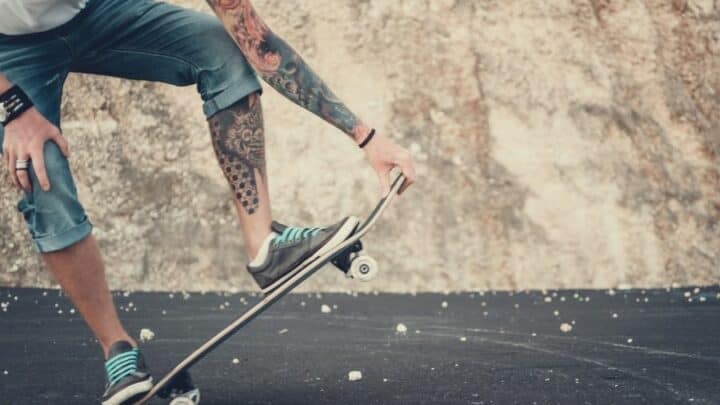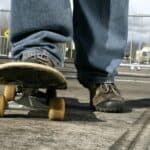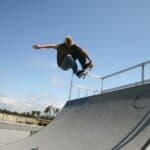Once you’ve mastered how to balance on your skateboard, it’s time to start learning some of the finer skills and tricks of the sport, and I guarantee you won’t regret it.
To manual is the equivalent of popping a wheelie on a bike, except you’re on a board, and your body is the control mechanism.
Like with everything in skateboarding, it requires a bit of practice, but once you’ve got it down, there’s no feeling quite like it.
Table of Contents
How to Manual Skateboard
A manual is an art of lifting 2 wheels off the ground by carefully shifting your weight. The skateboard tail is suspended in the air. To manual, move your back foot to the edge of the board and keep your front foot over the skateboard’s front truck. Then, shift to your back foot your weight while you lean forward with your upper body.
How to Manual on a Skateboard
To manual skateboard, start by skating in your usual (bent-knee) stance at a normal to moderate speed.
Next, shift your foot toward the tail end of your skateboard until it is just covering the edge. Your front foot should be positioned over your front truck.
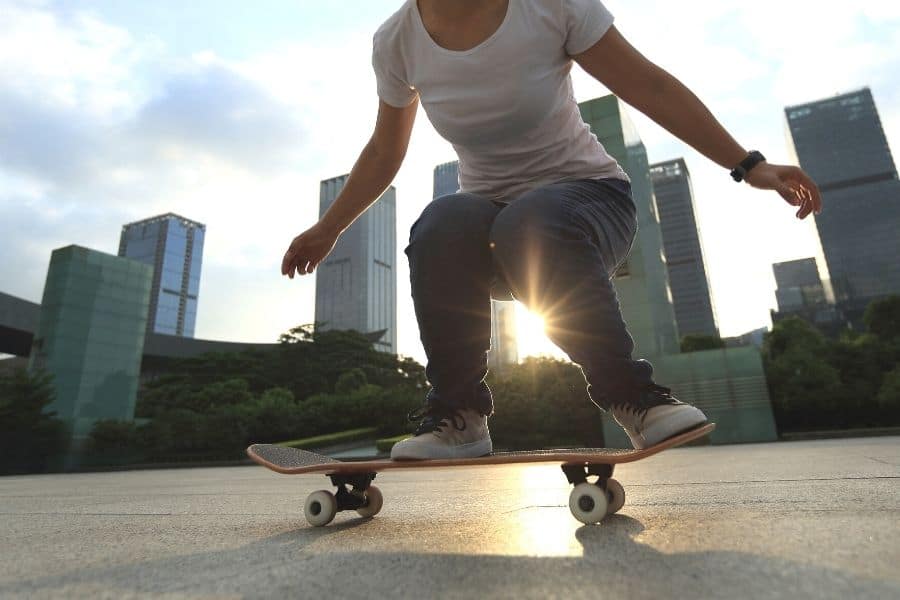
How to Manual Skateboard
Now the tricky part. Resist the desire to lean backward.
Instead, renegotiate your body weight so that you place extra weight on your back foot while simultaneously leaning your upper body forward.
In this way, you are keeping your body’s center of gravity aligned to the center of the board.
As you assume this position, you should feel your front wheels lifting along with the nose of your board. That being said, your tail should not be scraping the ground, so if you think this is about to happen, make some small shifts to your weight distribution.
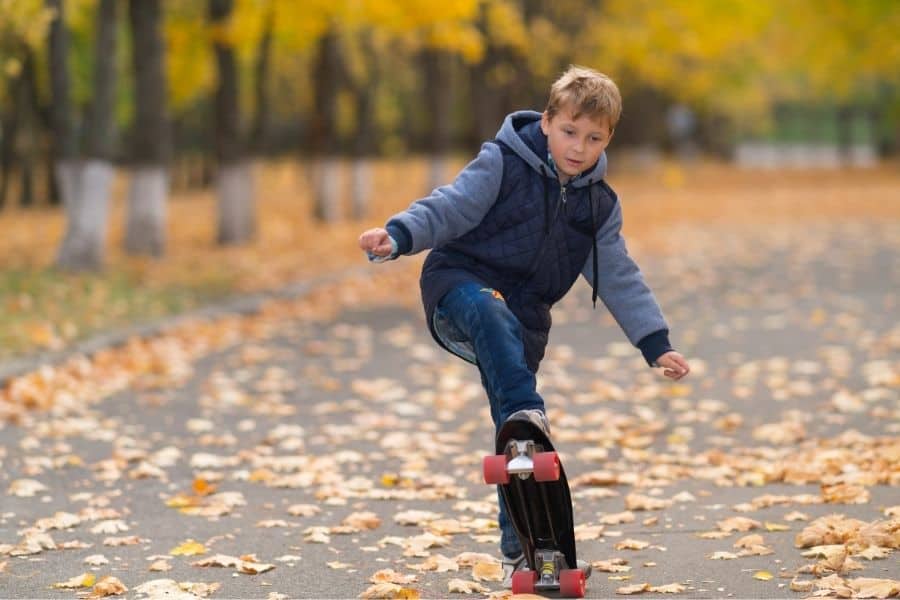
Manual on a Skateboard
To return all four wheels to the ground, shift some of your weight back to your front foot.
When you’re just starting out, you will likely only be able to manual for a few seconds at a time, but as you progress and you get used to the stance and feeling of riding manual, you’ll be able to cruise for longer distances.
Variations of Manual Skating
In this post, we’ve looked at how to do what is known as a regular manual, but there are many variations of this move that you can progress to as you advance.
A nose manual, for example, is where you shift your weight to the front of your board and ride with your back wheels in the air.
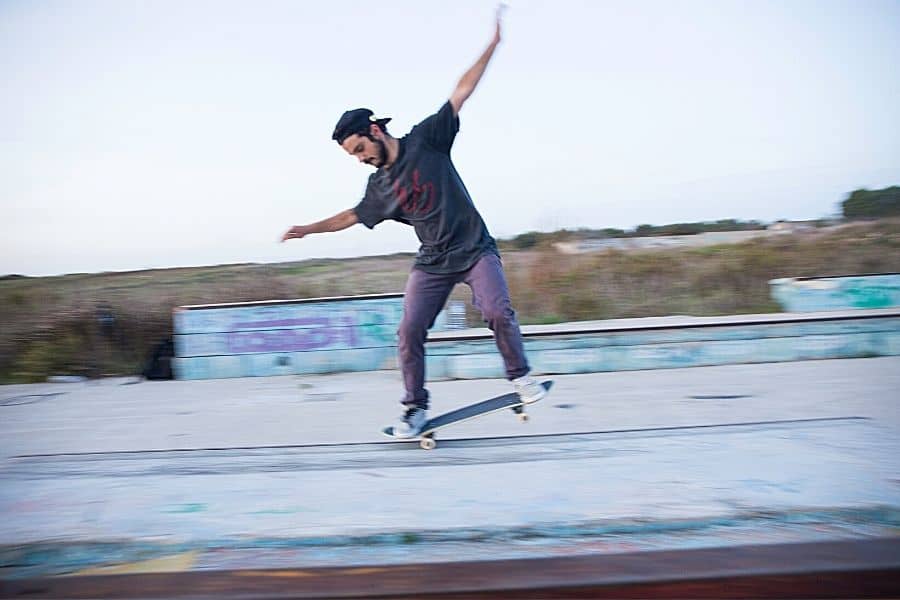
Nose Manual on a Skateboard
A hang ten manual, which is quite advanced, is when skaters balance on their front wheels with both feet next to each other on the front of the board (the opposite of this is a heelie).
As the name suggests, a one-foot manual is to do a manual while keeping only one foot on the board, and a one-wheel manual is to balance on only one back wheel.
There are also English and Swedish manuals. This is where skaters hook one foot under the front or back of their board, respectively, to lift and suspend it in the air.
While all of these are fun and adventurous skills, consider mastering the regular manual before trying them out.
What It Means to Ride a Manual
Have you ever seen a wheelie on a bicycle or motorbike? The rider lifts their front wheel into the air while their back wheel keeps them in motion.
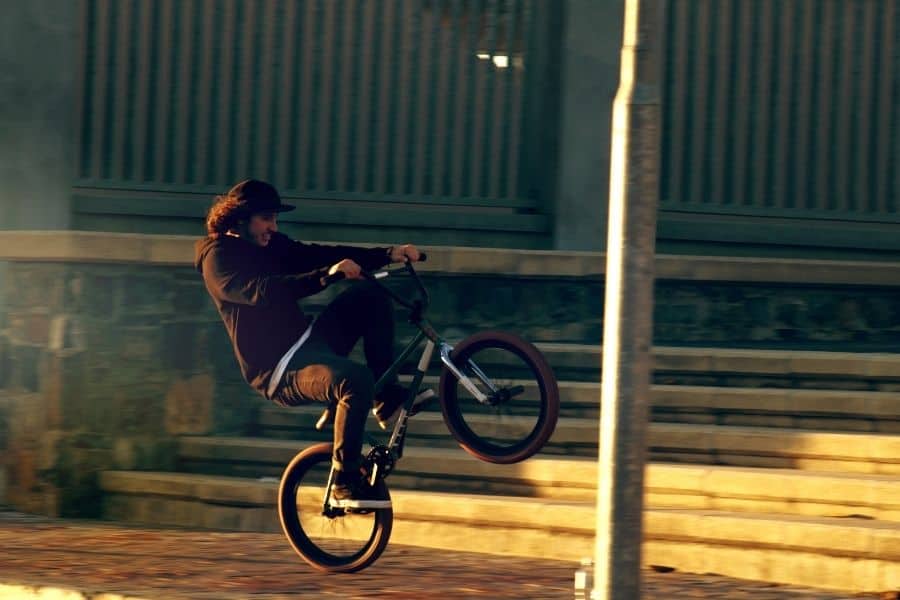
Wheelie on a Bike
On a skateboard, the concept of a manual is the same. A rider will redistribute their weight in such a way that they balance on their two back wheels while the front of their board is up in the air.
Through carefully balancing, a successful manual will move you along at regular skating speed and allow you to transition into or out of various tricks (while looking pretty cool in the process).
What to Expect and How to Prepare for Riding Manual
Before your enthusiasm gets the best of you, you can prevent some extra scrapes and bruises by first preparing to practice manual skating.
For one, don’t try this until you are comfortable with your balance on your board.
To start practicing, choose a location that is smooth and clear of obstacles. Your local skatepark, an empty parking lot, or an empty sidewalk are all good options.
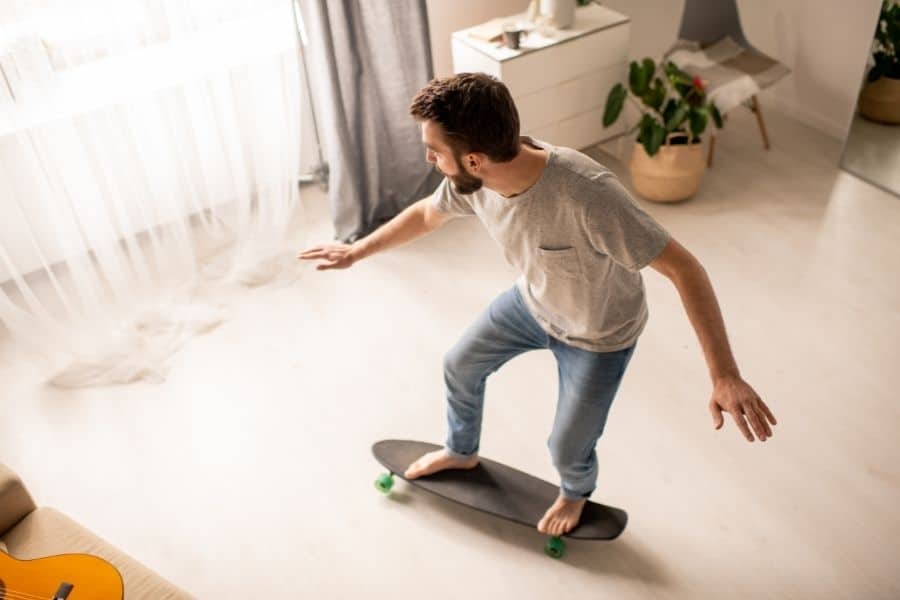
Practice Skateboarding
For your elbows, knees, and head, consider padding and a helmet. You won’t always need these, but they’re good to have when you’re just starting to learn new tricks.
You’re more than likely going to scrape your board’s tail a few times too.
Finally, mentally prepare yourself.
So much of skateboarding has to do with conquering apprehension and harnessing your confidence. Being in tune with your center of gravity won’t hurt either.
Frequently Asked Questions about How to Manual Skateboard
How do you push on a skateboard without falling?
To push on a skateboard, keep most of your weight on the foot that is on the board and your body balanced over the centerline. For beginners, keep your foot on the centerline of the board, facing in the same direction as the nose of your board, over your front truck. Bend your knee slightly.
What trick should I learn first on a skateboard?
Most skateboarders recommend learning the ollie first. This is a small, relatively easy jump and is the basis on which a multitude of other tricks are based.
How do I get better at manual skateboarding?
To get better in any sport, you’ve got to practice. Manual skating requires a lot of trial and error that can only be achieved through loads of practice. As you get more used to manual skating, you’ll also feel more confident and less anxious about falling.
Conclusion
Manual skating is one of the most fun skills you can learn on a skateboard, and it also opens up a range of possibilities in terms of transitioning into other moves and tricks.
While it may seem counterintuitive to balance on one end of a skateboard, you’ll become accustomed to the feeling and the freedom that comes with it as soon as you get it right.
Just always be careful during the learning period.
